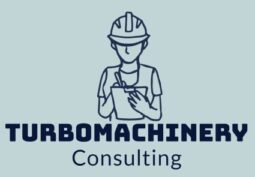BUY vs REPAIR - GAS TURBINES
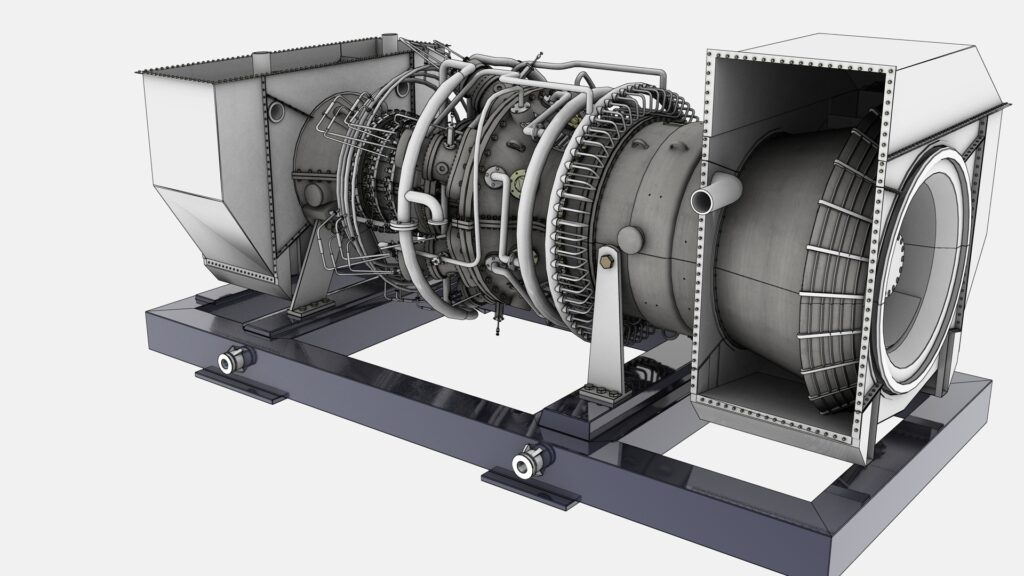
REASONS TO BUY AND TO REPAIR GAS TURBINES
WHEN TO BUY OR REPAIR GAS TURBINES
WHY TO BUY OR REPAIR GAS TURBINES
There are several reasons and actions to consider when deciding whether to buy or repair gas turbines in order to achieve good reliability, availability, maintainability, and safety in industrial projects and during operational and maintenance issues in an existing plant:
Reasons to repair gas turbines:
- Cost-effectiveness: Repairing a gas turbine can be a more cost-effective option compared to buying a new one, especially if the damage is not extensive.
- Reduced downtime: Repairing a gas turbine can lead to reduced downtime compared to replacing it with a new one, which can result in significant losses in productivity and revenue.
- Familiarity with the equipment: Repairing the gas turbine can allow maintenance personnel to become more familiar with the equipment, making it easier to diagnose and address future issues.
- Environmental impact: Repairing a gas turbine can have a lower environmental impact compared to purchasing a new one, as it avoids the carbon footprint associated with manufacturing and transporting a new unit.
Actions to ensure reliable and safe gas turbine repairs:
- Conduct regular inspections and maintenance: Regular inspections and maintenance can help identify potential issues early on and prevent larger and more costly repairs.
- Use high-quality replacement parts: When repairing gas turbines, it is important to use high-quality replacement parts to ensure reliable operation and minimize the risk of further damage or failure.
- Follow manufacturer guidelines and standards: It is important to follow the manufacturer’s guidelines and standards when repairing gas turbines to ensure that repairs are done correctly and safely.
- Use experienced and qualified personnel: Gas turbine repairs should be carried out by experienced and qualified personnel to ensure that repairs are done safely and effectively.
Reasons to buy gas turbines:
- Increased efficiency and performance: Newer gas turbine models often offer increased efficiency and performance compared to older models, resulting in lower fuel costs and improved power output.
- Lower maintenance costs: Newer gas turbines may have lower maintenance costs compared to older models, as they require less frequent repairs and replacements.
- Compliance with regulations: Purchasing a new gas turbine can ensure compliance with current regulations and standards, which may be stricter than when the existing gas turbine was installed.
- Improved safety: Newer gas turbines may have improved safety features and technology, reducing the risk of accidents or malfunctions.
Actions to ensure reliable and safe gas turbine purchases:
- Consider lifecycle costs: When purchasing a gas turbine, it is important to consider not just the upfront cost, but also the lifecycle costs, including maintenance, repairs, and fuel costs.
- Research and compare models: Researching and comparing different gas turbine models can help ensure that the best option is selected for the specific needs and requirements of the project or facility.
- Ensure proper installation and commissioning: Proper installation and commissioning are essential to ensuring the safe and reliable operation of a new gas turbine, and should be carried out by experienced and qualified personnel.
- Provide proper training: Training should be provided to personnel operating and maintaining the new gas turbine to ensure that it is operated safely and effectively.
The decision of whether to buy or repair a gas turbine depends on several factors, such as the age of the equipment, the extent of damage or wear and tear, the cost of repairs, and the availability of new and improved technology. Here are some reasons and actions to consider when making this decision:
Reasons to buy a new gas turbine:
- Obsolete technology: If the existing gas turbine is outdated and no longer supported by the manufacturer, it may be difficult or impossible to find replacement parts or skilled technicians to perform repairs.
- Efficiency improvements: Newer gas turbines are typically more efficient and can reduce fuel consumption and emissions, leading to cost savings and environmental benefits.
- Increased capacity: If the demand for power has increased beyond the capacity of the existing gas turbine, it may be more cost-effective to replace it with a larger, more powerful unit than to try to repair or upgrade the existing one.
- End of life: If the gas turbine has reached the end of its expected lifespan and is experiencing frequent breakdowns or maintenance issues, it may be more cost-effective to replace it with a new unit.
Actions to take when buying a new gas turbine:
- Conduct a thorough analysis of the energy needs and operational requirements of the facility to determine the appropriate size and specifications for the new gas turbine.
- Research and compare different models and manufacturers to identify the best option in terms of performance, efficiency, reliability, and cost.
- Consider the availability of local technical support and spare parts, as well as the manufacturer’s warranty and service agreements.
- Plan for the installation and commissioning process, including any necessary modifications to the existing infrastructure and equipment.
Reasons to repair a gas turbine:
- Minor damage or wear and tear: If the gas turbine is relatively new and the damage is limited to specific components or systems, it may be more cost-effective to repair or replace those parts rather than buying a whole new unit.
- Budget constraints: If the cost of a new gas turbine is prohibitive or if the facility cannot afford significant capital expenditures at the moment, repairing the existing unit may be the only viable option.
- Operational continuity: If the facility cannot afford to shut down operations for an extended period of time to replace a gas turbine, repairing the existing unit may be the best way to maintain uninterrupted power supply.
Actions to take when repairing a gas turbine:
- Conduct a thorough inspection and diagnosis of the gas turbine to identify the root cause of the issue and assess the extent of the damage.
- Develop a comprehensive repair plan, including cost estimates, timelines, and contingency measures in case of unexpected complications or delays.
- Select a reputable and experienced service provider to perform the repairs, and ensure that they have access to the necessary parts and equipment.
- Monitor the performance of the gas turbine after the repairs are completed to ensure that it is functioning properly and to detect any new issues that may arise.
There are various reasons why one may choose to either buy or repair a gas turbine in order to ensure good reliability, availability, maintainability, and safety in industrial projects and during operational and maintenance issues in an existing plant:
Reasons to buy a gas turbine:
Improved technology: Purchasing a new gas turbine may allow you to take advantage of new and improved technologies that are more efficient and reliable than older models.
Increased efficiency: Newer gas turbines can offer increased efficiency and performance, leading to lower operating costs and higher availability.
Improved emissions: Modern gas turbines have better emissions control systems, which can lead to improved air quality and compliance with environmental regulations.
Lower maintenance costs: Newer gas turbines may require less maintenance and have longer service intervals, leading to reduced maintenance costs over time.
Actions to take when buying a gas turbine:
Conduct a thorough assessment of your needs and requirements: Determine the power output, fuel type, and environmental factors that will impact the performance of the gas turbine.
Research suppliers: Compare the offerings of various gas turbine manufacturers and suppliers to find the best fit for your needs.
Consider the long-term costs: Evaluate the lifetime costs of the gas turbine, including maintenance, fuel consumption, and environmental compliance.
Reasons to repair a gas turbine:
Lower upfront costs: Repairing a gas turbine may be less expensive than purchasing a new one, especially if the damage is minor.
Minimize downtime: Repairing a gas turbine can be faster than replacing it, allowing you to get back up and running more quickly.
Maintain familiarity: If you have an experienced team that is familiar with the particular gas turbine, repairing it may be easier and more efficient than learning to work with a new model.
Actions to take when repairing a gas turbine:
Identify the root cause of the problem: Conduct a thorough investigation to determine the underlying issue and ensure that it is fully addressed during the repair process.
Use OEM parts: Whenever possible, use original equipment manufacturer (OEM) parts to ensure that the gas turbine is repaired to factory specifications.
Follow recommended maintenance procedures: Ensure that the gas turbine is properly maintained and serviced on a regular basis to prevent future issues and prolong its lifespan.
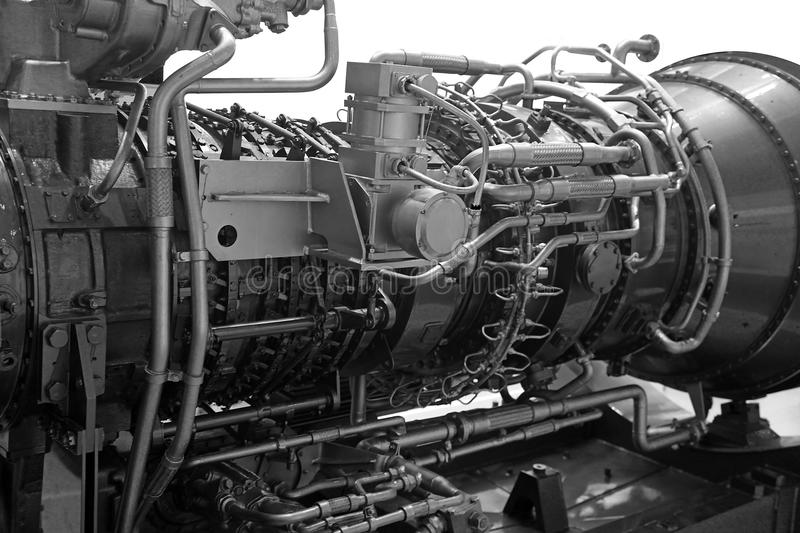
WHAT TO BUY OR REPAIR IN GAS TURBINES
HOW TO BUY OR REPAIR GAS TURBINES
WHO MUST BUY OR REPAIR GAS TURBINES
When it comes to buying or repairing gas turbines, there are several factors to consider in order to ensure good reliability, availability, maintainability, and safety, and to avoid critical failures. Here are some reasons and actions to consider:
Age and condition of the gas turbine: Gas turbines have a limited lifespan and will eventually need to be replaced. The age and condition of the gas turbine will determine whether it is better to buy a new one or repair the existing one. If the gas turbine is relatively new and in good condition, repairing it may be a more cost-effective option. However, if the gas turbine is old and has a lot of wear and tear, it may be better to replace it with a new one.
Performance and efficiency: Gas turbines that are not performing efficiently or are consuming too much fuel can be a sign of a problem. If the gas turbine is not meeting performance expectations or is not running as efficiently as it should, it may be time to consider a repair or replacement.
Maintenance requirements: Proper maintenance is critical to the reliability and safety of gas turbines. Regular maintenance can help to identify potential problems and prevent breakdowns. However, if the gas turbine requires frequent and expensive maintenance, it may be more cost-effective to replace it with a newer, more reliable model.
Safety concerns: Gas turbines operate at high temperatures and pressures, which can pose safety risks if not properly maintained. If there are safety concerns with the gas turbine, such as leaks or other issues that cannot be fixed with repairs, it may be necessary to replace the entire unit.
Operational needs: The operational needs of the plant should also be considered when deciding whether to repair or replace a gas turbine. If the plant is expanding or requires additional power capacity, it may be necessary to purchase a new gas turbine to meet these needs.
Actions to take:
Perform regular maintenance on gas turbines to identify potential problems and prevent breakdowns.
Monitor the performance and efficiency of gas turbines to ensure they are operating at optimal levels.
Conduct a cost-benefit analysis to determine whether repairing or replacing a gas turbine is more cost-effective in the long run.
Address safety concerns immediately and take steps to mitigate risks.
Consider the operational needs of the plant when making decisions about gas turbine repairs or replacements.
Here are some reasons and actions for how to buy and how to repair gas turbines to ensure good reliability, availability, maintainability, and safety in phases like industrial projects and during operational and maintenance issues in an existing plant, to avoid critical failures:
- How to buy a gas turbine:
- Identify the specific needs and requirements of the plant and the application
- Conduct a thorough evaluation of available options and manufacturers
- Consider factors such as reliability, efficiency, maintainability, safety, and cost
- Work with reputable vendors and suppliers to ensure the turbine is properly installed and commissioned
- Conduct regular inspections and maintenance to ensure continued reliability and performance
- How to repair a gas turbine:
- Develop a comprehensive maintenance plan based on the manufacturer’s recommendations and industry best practices
- Conduct regular inspections to identify potential issues before they become major problems
- Utilize qualified and experienced technicians for repairs and maintenance
- Utilize genuine manufacturer parts for replacements
- Conduct regular performance testing to ensure proper operation and identify potential issues
- Conduct post-repair testing and inspections to ensure proper operation
By following these actions, gas turbine owners can ensure their equipment is properly maintained and operated, minimizing the risk of critical failures and maximizing reliability, availability, maintainability, and safety.
The decision of who should buy or repair gas turbines depends on the specific situation and the expertise available in the organization. In general, purchasing new gas turbines is typically handled by the procurement department, while repairing and maintaining gas turbines is usually the responsibility of the maintenance and operations department.
When buying a gas turbine, it is important to involve experts in the selection process who can evaluate the specific requirements of the project, such as power output, fuel efficiency, environmental regulations, and maintenance requirements. These experts may include engineers, technicians, and procurement professionals who have experience with gas turbines.
When repairing a gas turbine, it is essential to have qualified and experienced personnel who are trained to handle the specific make and model of the turbine. The maintenance team should also have access to the necessary tools, equipment, and spare parts to ensure that repairs can be carried out quickly and effectively. In addition, it is important to follow the manufacturer’s recommended maintenance schedule and procedures to ensure the turbine’s reliability, availability, maintainability, and safety.
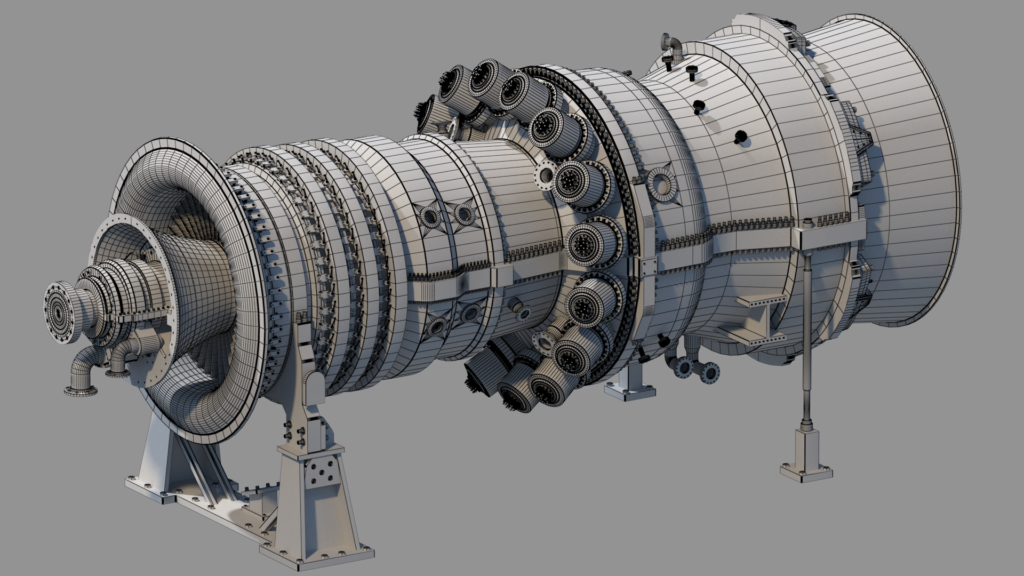
CRITICAL PROCEDURES & BETTER RECOMMENDATIONS TO BUY OR REPAIR GAS TURBINES
WHEN TO BUY AND REPLACE GAS TURBINES
WHAT IS BETTER, TO BUY OR TO REPAIR GAS TURBINES
Some critical procedures and better recommendations for buying and repairing gas turbines to ensure good reliability, availability, maintainability, and safety and to avoid critical failures are:
Conducting a thorough feasibility study: Before buying or repairing a gas turbine, it’s essential to conduct a feasibility study to determine if it’s the right option for your project or plant. This study should assess the technical, financial, and operational aspects of the gas turbine to ensure it meets your requirements.
Selecting the right gas turbine: The gas turbine selected for your project or plant should be based on its technical specifications, operational requirements, and expected performance. Factors such as fuel efficiency, emissions, maintenance requirements, and availability of spare parts should also be considered.
Conducting regular inspections and maintenance: Gas turbines must undergo regular inspections and maintenance to ensure they’re operating efficiently and safely. This includes checking for wear and tear, leaks, and other potential issues that could lead to a critical failure. Maintenance schedules should be followed strictly and all repairs and replacements should be carried out by qualified technicians.
Updating equipment and software: Upgrades and software updates can improve the reliability and efficiency of gas turbines. This includes the installation of new sensors, controllers, and other systems that improve monitoring and control of the turbine.
Having a contingency plan: A contingency plan should be in place in case of unexpected failures. This includes having a backup turbine or a contingency plan to rent or purchase another gas turbine in case of emergency.
Ensuring safety measures: Safety measures should be strictly followed, including proper ventilation, regular cleaning, and the installation of appropriate safety features such as automatic shut-off valves and fire suppression systems.
Training and education: Proper training and education for operators and maintenance technicians can improve the safety and reliability of gas turbines. It’s essential to ensure that all personnel involved in operating and maintaining gas turbines have the necessary training and knowledge to carry out their roles effectively.
Reasons to buy or replace a gas turbine:
Age and condition: If the gas turbine is old and has been in operation for many years, it may be prone to frequent breakdowns and repairs. In such cases, it may be more cost-effective to replace the turbine with a newer model that is more reliable and efficient.
Obsolescence: As technology advances, older gas turbines may become obsolete and more difficult to maintain or repair. This can lead to higher operating costs and reduced reliability.
Upgrades and capacity: If the demand for power in the plant has increased or if there is a need for new features or upgrades, it may be necessary to replace the gas turbine with a newer, higher-capacity model.
Safety concerns: If there are safety concerns related to the gas turbine, such as a history of accidents or breakdowns, it may be necessary to replace the equipment to prevent further incidents.
Actions to take when buying or replacing a gas turbine:
Conduct a feasibility study: Before making any purchase or replacement decision, it is important to conduct a feasibility study to determine the cost-effectiveness of the investment. This study should consider the cost of the new equipment, installation costs, operating costs, and potential savings from increased efficiency and reliability.
Consider maintenance and repair costs: When selecting a new gas turbine, it is important to consider the cost and availability of spare parts, as well as the cost of maintenance and repair. This will help ensure that the equipment remains reliable and efficient over its lifespan.
Consider environmental impact: When selecting a new gas turbine, it is important to consider the environmental impact of the equipment. This includes emissions, noise pollution, and other environmental factors that may impact the surrounding area.
Plan for installation and commissioning: When replacing a gas turbine, it is important to plan for the installation and commissioning of the new equipment to ensure that the transition is smooth and does not impact plant operations.
Reasons to repair a gas turbine:
Minor repairs: If the gas turbine is in relatively good condition and has only minor issues, repairing the equipment may be a cost-effective solution.
Cost: If the cost of repairing the gas turbine is significantly lower than the cost of replacement, it may make more sense to repair the equipment.
Availability of spare parts: If spare parts for the gas turbine are readily available and not too expensive, repairing the equipment may be a good option.
Actions to take when repairing a gas turbine:
Conduct a thorough inspection: Before repairing the gas turbine, it is important to conduct a thorough inspection to identify any potential issues and determine the best course of action.
Use genuine spare parts: When repairing the gas turbine, it is important to use genuine spare parts to ensure that the equipment remains reliable and efficient.
Perform regular maintenance: Regular maintenance of the gas turbine can help prevent breakdowns and prolong the lifespan of the equipment.
Consider safety: When repairing the gas turbine, it is important to consider safety factors and take steps to prevent accidents or equipment failure.
The decision to buy or repair a gas turbine depends on several factors such as the age of the turbine, the cost of repair versus replacement, and the long-term goals of the company.
If the gas turbine is relatively new and has not experienced significant wear and tear, it may be more cost-effective to repair it rather than replace it entirely. Additionally, if the cost of repair is significantly lower than the cost of a new turbine, repairing may be the better option.
However, if the gas turbine is old and has a history of breakdowns or has undergone significant wear and tear, it may be more beneficial in the long run to replace it with a new, more reliable model. This can help to prevent costly downtime and repairs in the future.
Ultimately, the decision to buy or repair a gas turbine should be made after careful consideration of the specific circumstances, including the cost, reliability, and maintenance history of the turbine. It’s also important to consult with industry experts and professionals who can provide valuable insight and guidance on the best course of action.
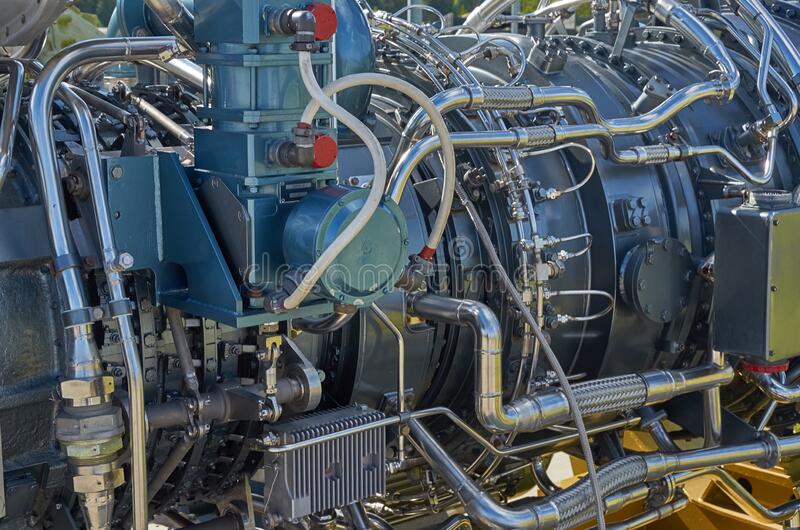
ADVANTAGES TO BUY vs REPAIR GAS TURBINES
ADVANTAGES TO REPAIR vs TO REPLACE GAS TURBINES
The advantages of buying a new gas turbine instead of repairing an existing one are:
Improved reliability: A new gas turbine will have the latest technology and features, which can improve its reliability and reduce the risk of critical failures.
Improved efficiency: Newer gas turbines are often more efficient than older ones, which can lead to cost savings in fuel consumption.
Reduced maintenance costs: A new gas turbine may require less maintenance than an older one, reducing the overall maintenance costs and downtime.
Lower emissions: Newer gas turbines often have lower emissions, which can help companies meet environmental regulations and reduce their carbon footprint.
The advantages of repairing a gas turbine instead of buying a new one are:
Cost savings: Repairing a gas turbine may be more cost-effective than buying a new one, especially if the repairs are minor.
Faster turnaround time: Repairing a gas turbine may be quicker than waiting for a new one to be delivered and installed, which can reduce downtime in a plant.
Familiarity with equipment: Repairing a gas turbine that a company is already familiar with can reduce the learning curve and help operators get the equipment back up and running quickly.
Less waste: Repairing a gas turbine reduces waste and is more environmentally friendly than buying a new one.
In general, the decision to buy or repair a gas turbine should be based on factors such as the severity of the damage, the age of the equipment, the cost of repairs, and the availability of replacement parts. It’s important to consult with experts in the field to make an informed decision.
Repairing a gas turbine can have advantages over replacing or buying a new one in certain situations. Some advantages of repairing gas turbines include:
Cost savings: Repairing a gas turbine can often be less expensive than buying a new one, especially if the damage is minor and can be fixed with simple repairs.
Shorter downtime: Repairing a gas turbine can be quicker than buying and installing a new one, which can help to reduce downtime and ensure the availability of the turbine for critical operations.
Familiarity with equipment: If a company is familiar with the equipment and has a history of successfully repairing gas turbines, it may be more cost-effective and efficient to repair rather than replace the equipment.
Environmental benefits: Repairing a gas turbine instead of replacing it can reduce the environmental impact associated with manufacturing and disposing of new equipment.
However, there are also potential disadvantages to repairing a gas turbine. For example, repairing may not address all the underlying issues with the equipment and could lead to further breakdowns in the future. Additionally, older equipment may not have replacement parts readily available, making repair difficult or impossible.
Ultimately, the decision to repair or replace a gas turbine should be based on a careful evaluation of the cost, downtime, reliability, and safety considerations involved.
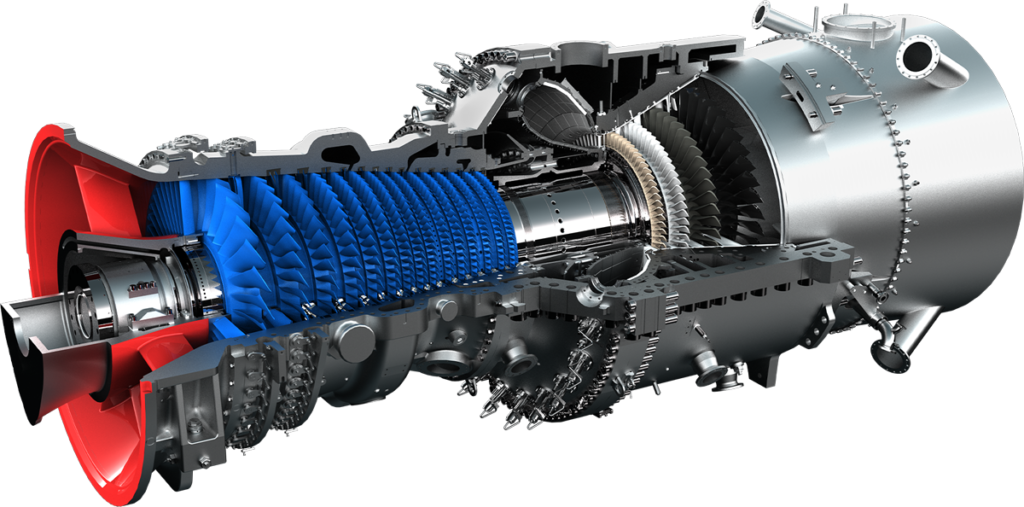
DISADVANTAGES TO BUY vs TO REPAIR GAS TURBINES
DISADVANTAGES TO REPAIR vs TO BUY GAS TURBINES
There are several potential disadvantages to buying or replacing gas turbines instead of repairing them:
Cost: Buying or replacing a gas turbine can be significantly more expensive than repairing it. This can be especially true if the existing turbine can be repaired to extend its lifespan.
Disruption: Replacing a gas turbine can require significant downtime, which can be disruptive to operations and cause delays in production.
Complexity: Replacing a gas turbine can be a complex process that requires coordination between multiple teams and contractors. This can increase the risk of errors or delays during the replacement process.
Compatibility: If a replacement gas turbine is not fully compatible with the existing plant infrastructure, additional modifications may be necessary to ensure proper operation. This can further increase costs and delays.
Environmental impact: Replacing a gas turbine may have a larger environmental impact than repairing it, as the manufacturing process for new turbines can be resource-intensive and produce greenhouse gas emissions.
Overall, it’s important to carefully weigh the costs and benefits of buying or replacing gas turbines versus repairing them, and to consider the specific needs and constraints of the plant and its operations.
There are several disadvantages to consider when deciding whether to repair or replace gas turbines:
Limited lifespan: Gas turbines have a limited lifespan, and repairing them may only extend their lifespan by a certain amount. Eventually, the cost of repairing and maintaining an old gas turbine may exceed the cost of buying a new one.
Obsolescence: As technology advances, older gas turbines may become obsolete, making it difficult to find replacement parts and increasing the risk of breakdowns.
Efficiency: Newer gas turbines tend to be more efficient and can provide better performance and reliability, leading to cost savings and improved safety.
Downtime: Repairing a gas turbine can take a significant amount of time, leading to extended downtime and lost productivity. In some cases, it may be more cost-effective to replace the turbine to avoid prolonged periods of downtime.
Safety concerns: As gas turbines age, they may become more prone to safety issues and failures, which can pose a risk to personnel and the environment. In some cases, replacing the turbine may be the safest option.
Overall, the decision to repair or replace a gas turbine should be based on a thorough assessment of the turbine’s condition, its expected lifespan, the cost of repairs, and the potential risks and benefits of replacement.
